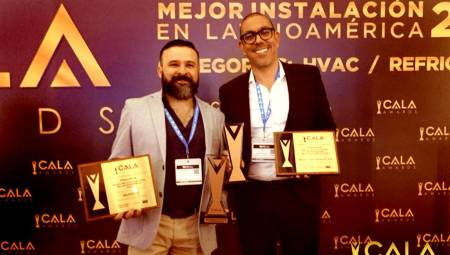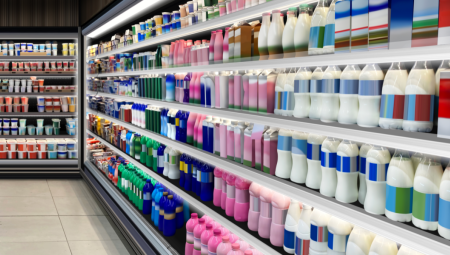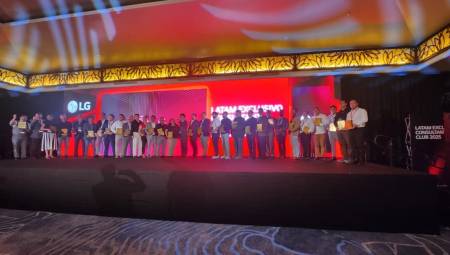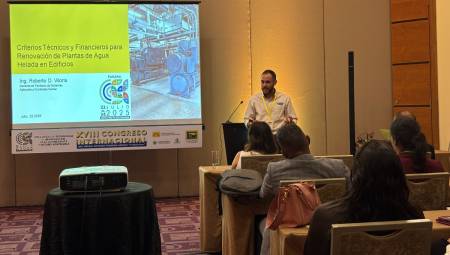 We highlight a series of problems and their respective solutions to make more efficient the systems responsible for generating excellent Indoor Air Quality.
We highlight a series of problems and their respective solutions to make more efficient the systems responsible for generating excellent Indoor Air Quality.
By Ernesto Porras*
Introduction: To have a clear concept of what good indoor air quality means in buildings it is important to understand the role of ventilation systems.
Ventilation is a process of supplying and extracting air by natural or mechanical means to and from a building. The design of a building's ventilation system must meet the minimum requirements of local building regulations for such systems.
Natural ventilation contemplates the entry of controlled and uncontrolled air through cracks, windows, doors and vents, as well as the air that leaves the enclosure through the same routes. Natural ventilation is considerably affected by weather conditions and is often not as considerate as it depends on external variables that are often difficult to control.
On the other hand, there is mechanical ventilation, which is provided by centrifugal fans, axial or the air conditioning systems of a building and provides the flow of air supply or extraction in a controlled manner. Mechanical ventilation in a building serves to provide fresh, clean air, to maintain a thermally comfortable work environment, and to remove or dilute pollutants in the air in order to reduce their concentration.
The efficiency of a ventilation system can be assessed by environmental factors such as the quality of the supply air, the thermal comfort conditions of the occupied space and the level of pollutants present in the air of the treated areas.
Problems and solutions
Problem #1. Not having an adequate renewal of the air in an enclosed or overcrowded enclosure. In these cases, people often feel congested, numb and their productivity decreases.
Solutions:
1. Reduce on-site activities. Perhaps it is with a larger number of occupants for which it was designed.
2. Verify that you have adequate ventilation by measuring the level of CO2 inside. If the level is above 1,000 ppm, this may indicate a problem with the ability of the ventilation or air conditioning system to remove contaminants generated by the occupants. It is necessary to inspect whether there are other sources of contaminants and thus decide what improvement measures should be taken.
3. Increase the supply of fresh air to the building. The required rate depends on the number of occupants and the type of activity performed in the area. The ASHRAE 62.1 standard provides us with information on minimum ventilation rates to ensure good indoor air quality.
Problem #2. Unusual odors in the ventilated or heated area may emanate from internal or external sources. In most cases odor problems are associated with the fresh air intakes of the ventilation or air conditioning system. In this case, fresh air intakes should be avoided near outlets or extractions of polluted air from the building or from sources close to it.
Solutions:
1. Relocate fresh air intakes away from polluting sources, including extraction systems for bathrooms, kitchens, public roads, parking lots, smoking areas, among others.
2. Install activated carbon filters to minimize odors from external contaminant sources.
Problem #3. Eye irritation, dry and sore throat, nosebleeds and headaches are symptoms of exposure to formaldehyde vapor, a colorless irritant gas with a pungent odor. Building materials or new furniture, carpets and fabrics are the most common sources of this steam and inadequate ventilation can cause this steam to last inside the building for a long time.
Solutions:
1. Do not select any building material, furniture or accessory that can emit formaldehyde. If it does, the release of these gases must be allowed prior to installation.
2. Improve the supply of fresh air by opening windows prior to the occupation of the ventilated or heated area.
3. Remove or reduce the source by relocating it to a better ventilated space.
Problem #4. Dozens of organic chemicals and solvents are typically used in the construction of buildings or remodeling of existing areas. The volatile compounds from them are known as volatile organic compounds (VOCs). A wide variety of VOC sources can be found, such as plastics, floor wax, furniture, structural materials, printers, photocopiers, or stationery in an office. Poor ventilation can aggravate the effects of VOCs causing eye irritation and other symptoms.
Solutions:
1. Eliminate all potential sources of VOCs as much as possible.
2. Provide greater air renewal in areas where large amounts of VOCs are emitted.
3. Install an air extraction system focused on the VOC emitting source in areas where there are processes that involve the use of organic solvents.
Problem #5. Dirt or dust accumulated around diffusers, grilles, etc. indicates that the ventilation or air conditioning system has not been properly maintained or that the air entering through the fresh air intakes is not clean enough. People's health can be affected due to suspended particles that are recirculated in ventilated or heated areas.
Solutions:
1. Check the ventilation or air conditioning system and remove dirt accumulated in the air handling units or fans and ducts.
2. Review the preventive maintenance schedule and make sure filter cleaning is done more frequently.
3. Remove or relocate fresh air intake points so that cleaner air is supplied.
4. Install higher efficiency filters in the ventilation or air conditioning system. Minimum MERV 8 and MERV 11 filters are recommended for systems that serve office buildings.
Problem #6. In ventilated or heated areas you can find microorganisms, such as fungi, bacteria, viruses, among others. The growth of fungi in the structural materials is a sign that biological growth in the area is flourishing. Air with excess moisture, stagnant water, dust-filled filters, clogged drainage trays and the same structures in buildings that have been damaged by moisture, provide favorable conditions for biological growth that ends up affecting the health of the occupants.
Solutions:
1. Eliminate possible water sources that may stimulate the growth of fungi, especially stagnant water in air conditioning systems.
2. Repair and maintain all water pipes and drainage systems of the building.
3. Repair areas that have been affected by flooding or leaks.
4. Remove and replace contaminated porous materials, such as filters from densely clogged ventilation or HVAC units, moldy shingles and carpets, among others.
5. Disinfect all smooth surfaces that have been contaminated by fungi.
6. Provide dehumidifier units to control humidity within the optimal range.
7. Make use of complementary methods of mitigation of microorganisms such as irrigation with ultraviolet light type C.
As a final recommendation I suggest that each building has a plan that allows it to guarantee indoor air quality in a stable and continuous way. This plan must have the design considerations of the ventilation or air conditioning systems, the operation and maintenance manuals of the installed systems, a training program for technical personnel aimed at understanding and guaranteeing indoor air quality and a schedule of inspection of the most critical factors that may negatively impact the indoor air quality in the building.
* Eng. Ernesto Porras, Consultant in Air Conditioning, Cooling Districts, Thermal Storage and Indoor Air Quality - [email protected]














